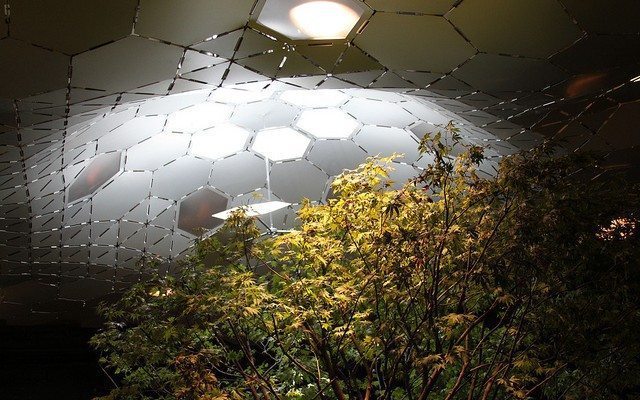 Image courtesy of [Mario Menti via Flickr]
Image courtesy of [Mario Menti via Flickr]
Energy and Environment
Underground Cities, Brought to You by New York’s Lowline
In most cultures and throughout history, under the ground has been a place to which few have been interested to venture. It is a place of darkness and isolation, with morbid undertones. Underground is thought of as a place of burial; having crypts and tombs, it is thought of as a place of death. But New York City’s proposed Lowline could change all that, bringing life and light to the deep places of the Earth.
Set to open in 2018, the Lowline is a planned underground park set to be built at an abandoned trolley station on Delancey Street on Manhattan’s Lower East Side. The space, built in 1908, was abandoned 40 years later when trolley services ended in the city; however, there is still some aesthetic appeal with regard to high ceilings and cobblestones. It is located right next to the JMZ subway station, so travelers passing through can stop by. It will have trees, grass, benches, and natural sunlight. This last point is the great appeal; a system of mirrors and refractors will channel sunlight through an irrigation system–specialized pipes–to distribution panels underground. This will allow for real plants to grow under real conditions.

Courtesy of mike via Flickr.
Abandoned urban spaces are eyesores and breeding grounds for dangerous social and health conditions. This program will transform this particular space into something productive and for the public’s benefit. It will provide green space for an otherwise highly built up and concrete sector of the city. Of course, green space and benches will not be enough to draw sufficient crowds regularly enough to maintain the financial viability of the park. Especially considering that the main draw is the natural sunlight, on a cloudy or rainy day when people would not be interested in spending time in an outdoor park, the Lowline might be gloomy and unappealing as well. Therefore engineers intend to include retail space, youth activities, and culturally motivated programs. In this sense, the Lowline is not just a park but a center of activity and events.
Underground cities are not new conceptions. One of the most notable manifestations is in science fiction master Isaac Asimov’s planet-wide city of Trantor in the Foundation Trilogy. In these novels, the massive city is mostly constructed of domes and underground systems; residents do not have much access to open air. People often suffer severe emotional and mental strains as a result, feeling claustrophobic, depressed, and paranoid. Further, the layout is in some ways a tool of control by a tyrannical political regime. At any rate, the philosophical lessons of these books are poignant warnings with regard to planned cities and livelihoods of citizens. If the Lowline is successful it could set a precedent for people spending more time and possibly even living underground like rodents. Human beings are physiologically surface dwellers; it could be a sociological step down to emphasize the underground in this way.

Courtesy of Kris Arnold via Flickr.
Yet this might be taking it too far, and we should focus on all the practical benefits that can be derived from this system of thought and technology. As designer James Ramsey points out, the solar technology can be adapted to places such as hospitals, schools, basements, and office interiors as well. This could enable for much improved mental conditions as well as aesthetic appearances of otherwise bland built environments. Sunlight and green plants have been linked to increased mental health and productivity. Furthermore, if real trees will be able to grow underground due to the real sunlight, imagine the implications for the agricultural industry. Perhaps large swaths of plants can be grown underground in regions whose environments are otherwise unsuitable. This would allow for more effective production and distribution of food, overcoming restrictions of climate, insects, and the like.
In an era of limited access to space and aesthetics, concerns over energy and food, and questions about public welfare, the Lowline represents creative thinking and technological innovation with wide implications and exciting opportunities.








Comments